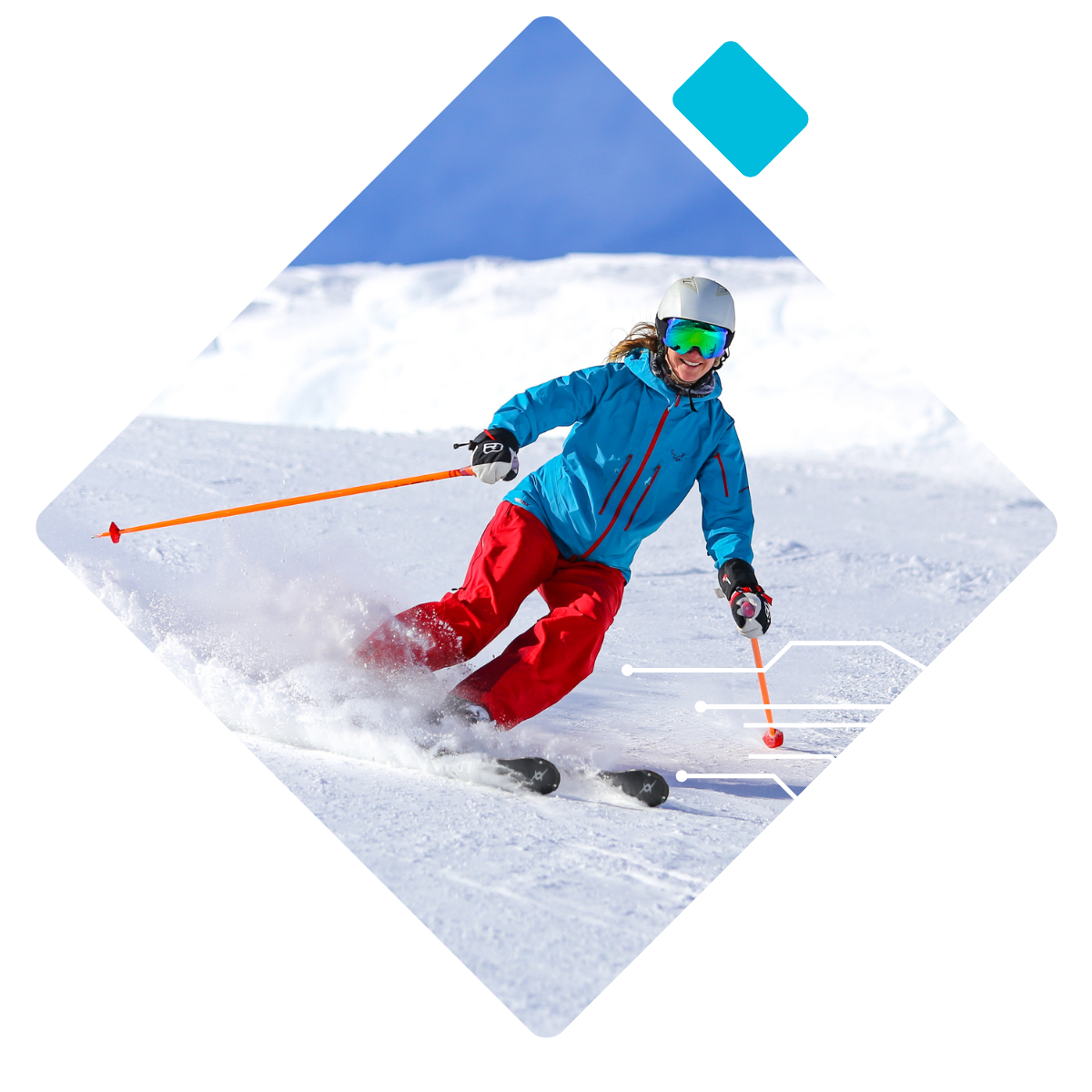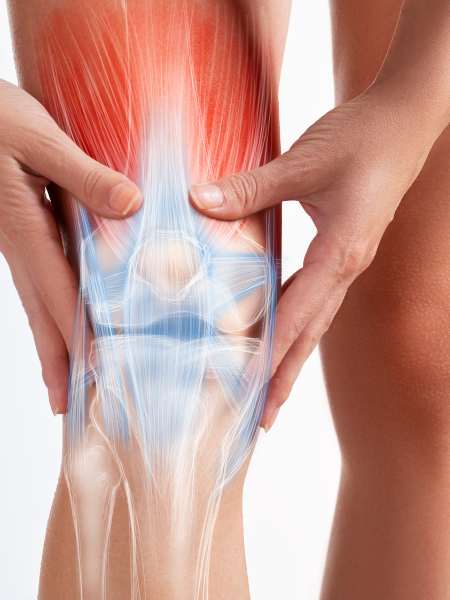The Knee

The knee is one of the most important and powerful joints in the human body. The knee is a basic hinge joint that is used for ambulation, activity, and stabilization of the trunk and lower extremity. Unfortunately, due to the location and importance of the joint it can be easily prone to injury.
If you’re experiencing knee pain, call one of our offices or book an appointment online to get started.
Knee Anatomy
The knee joint is a hinge joint made of three bones called the femur, tibia, and fibula. They combine to allow flexion and extension of the lower extremity. The medial and lateral meniscus are cartilage bumpers that sit between the tibia and femur and are important for cushioning the knee.
There are four important ligaments surrounding the knee including the medial and lateral collateral ligaments (MCL and LCL) that sit on the outside of the knee and the anterior and posterior cruciate ligaments (ACL and PCL) inside the knee. These ligaments provide stability in various directions around the knee.
A healthy functioning knee not only benefits from the above bones, meniscuses, and tendons being in good condition, but also benefits from the support of the patellofemoral compartment. The kneecap, also known as the patella, is attached to the quadricep tendon and patellar tendon. The hamstring tendons also attach to the posterior aspect of the knee. Together these tendons aid in the flexion and extension of the knee and are important for walking and other daily activities.


What causes
knee pain?
What causes knee pain?
There are many causes of knee pain. Some common causes are damage to the cartilage of the knee leading to arthritis, tears of the meniscus, tears of one of the cruciate or collateral ligaments, patellar dislocations, fractures, or inflammation of one of the tendons. Pain from these injuries can be experienced in various locations in the knee joint, but is commonly noticeable while weight-bearing or during activity.
Treatment
At Pacific Crest Orthopedics, we customize a treatment plan to meet your individual needs. In the knee, some of the most common treatments include different types of injections, the use of anti-inflammatories, physical therapy, and the use of a knee brace. For some conditions, surgery is indicated as the best option. See more on our surgery treatments.
Ephraim Dickinson, MD at Pacific Crest Orthopedics has extensive experience treating your knee pain and providing therapies to prevent future problems and to keep you active and healthy. Don’t continue to suffer from knee pain or immobility. If you have questions about knee pain, call Pacific Crest Orthopedics in San Francisco or use the online booking tool to schedule an appointment today.

Real Stories, Real Recovery.



